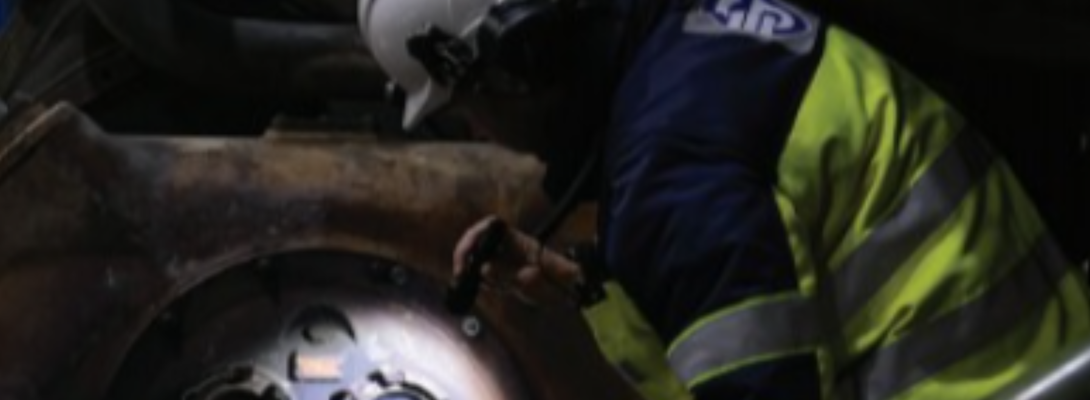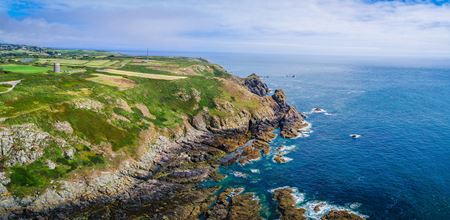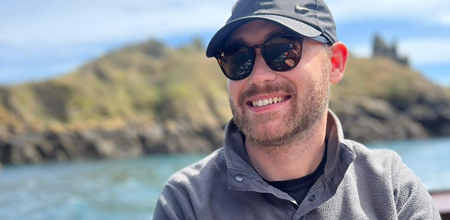We may assume there aren’t many engineering jobs available in Guernsey. But in fact we need engineers right here with us to help keep pace with modern life. Here we talk to James Steen, one of our Shift Engineers, about a job that helps keep our island running.
How does your job help keep the island running?
I’m one of six Shift Engineers who cover on-island generation on a 365, 24/7 shift rota.
At the Vale power station, at any given time we have ten different engines which we can rely on for generation. Depending on how much power islanders demand, how long for, which fuel is in use, and what maintenance is going on, this could mean a lot of work to keep us busy.
We need people on the ground 24/7 to make sure we can quickly react to demand as it peaks and dips throughout the day and night. Our on-site engineers will apply the principles of electrical engineering to help keep the island running, including electrical circuits, electromagnetism and power distribution, plus design, control and running of electricity generation equipment.
Around 90% of Guernsey’s electricity is imported from the European grid via a subsea cable. And any remaining demand is topped-up at the Vale power station through heavy fuel oil (HFO) and diesel generation. So when ‘load’ – the amount of electricity consumed – exceeds our cable’s supply capacity (60 MW), we then prepare the plant and its engines to produce the extra power needed to meet islander’s demand.
In the unlikely event our cable to France fails, we’d need to run engines 24/7. This means we'd also need extra fuel delivered within a few days, especially if we're in the chills of winter. Fuel is delivered to Guernsey by ship and following a tide window to dock in St Sampsons harbour, it then takes a good few hours to transfer into our 2,500 m³ fuel tanks.
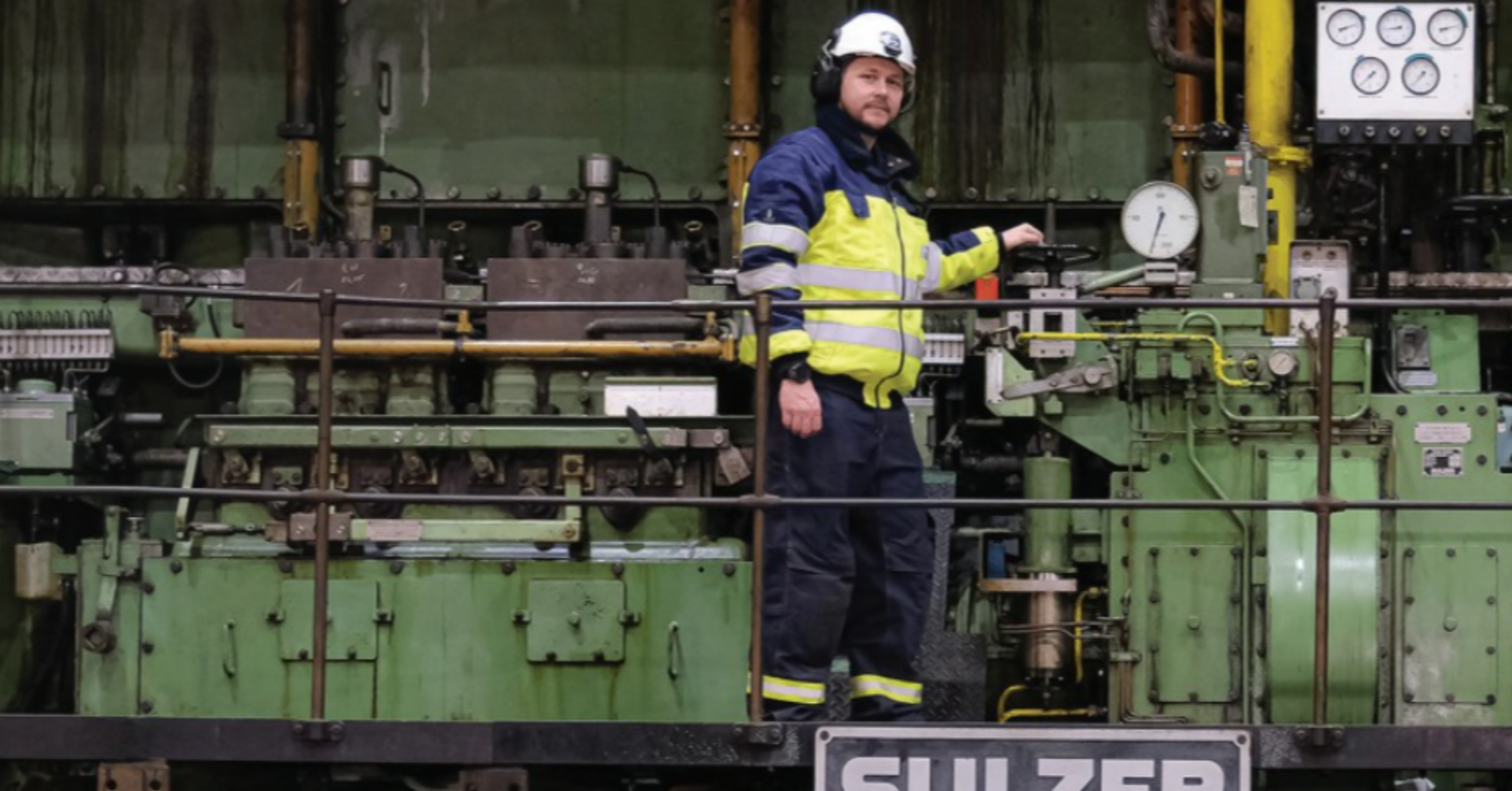
In a nutshell, what does a Shift Engineer at Guernsey Electricity do?
It’s impossible to have the same day twice on our site.
The word ‘shift’ in the job title refers to the three shifts in every 24-hour period; our morning shift will differ from an afternoon shift, and the night shift is a different experience still.
This is partly because electricity demand doesn’t happen in a straight line. And much like other areas such as traffic and travel, there are high ‘peak’ demand times, and low ‘off-peak’ times. On a normal workweek, our electricity peaks at around 8am and 2pm, finishing with a 6pm high before power tapers off into a quiet night when fossil-fuel generation is no longer needed. It’s this continuous wave of demand, particularly in winter, that splits up our engineering days into a wide variety of work.
Every shift is an experience, with each having its own agenda to work through, alongside unplanned activities or needs that pop up on site.
These tasks may include isolating individual engines by disconnecting them from the main power to make sure they're safe for planned maintenance, such as high voltage power, fuel supplies, steam heating, or other auxiliary equipment. This comes alongside the inevitable paperwork too (known as a Permit to Work).
Or following a routine inspection of a control panel, we may need to write up a safety report, or organise replacement parts for generator repair by communicating with other areas of the business.
This photo shows an engine overhaul for a cylinder head replacement.
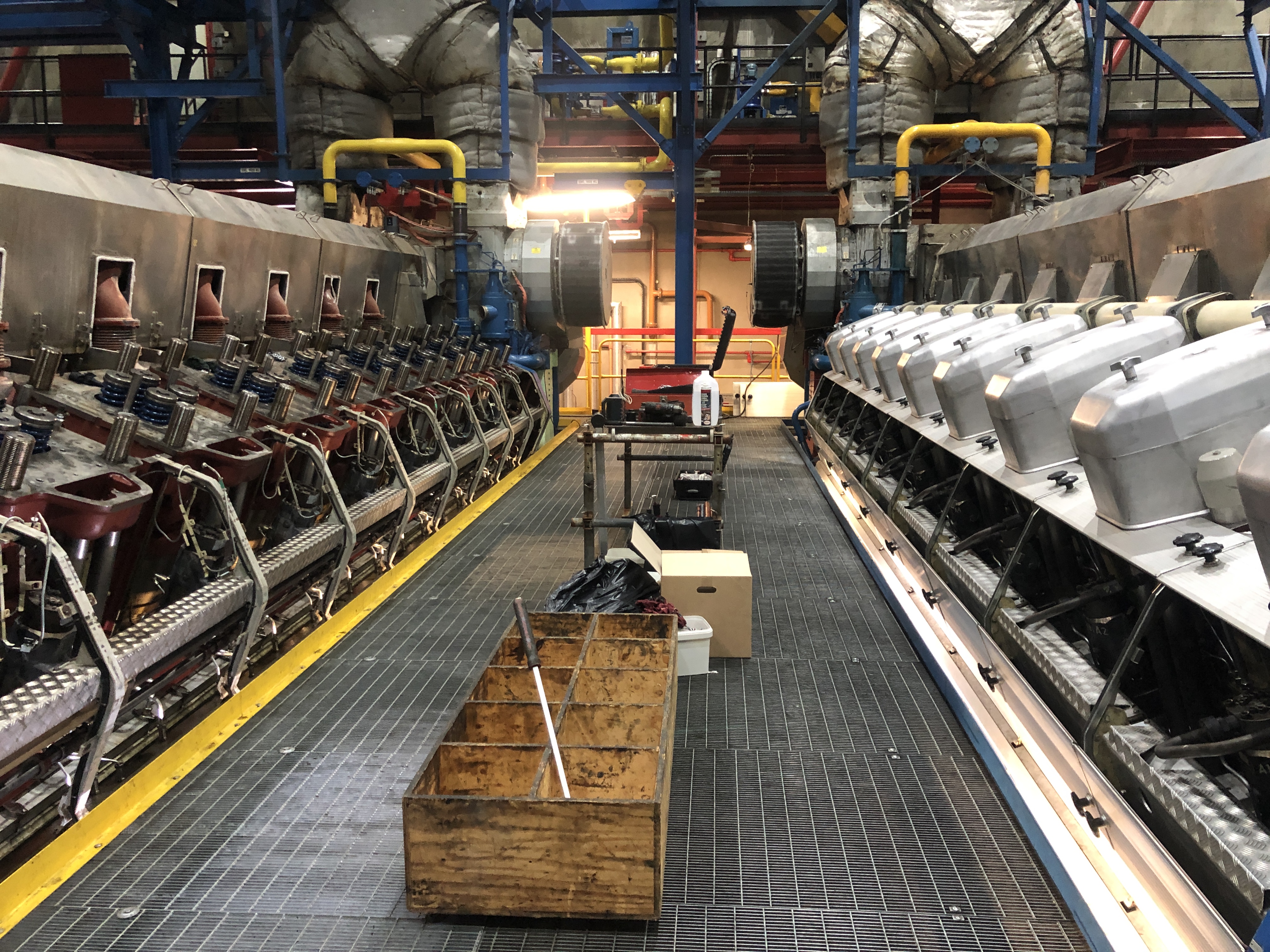
What are you responsible for specifically?
Our role is to supply and maintain the power behind life here in Guernsey, and my part in that story involves many different tasks.
For example, I’m responsible for starting and running engines to react to electricity demand changes. This demand is linked to human behaviour and weather conditions, meaning it can’t be fully automated as you need experienced people on deck ready to respond to anything at any time. We use systems to predict potential power demands throughout each day with previous usage data from over the years to help guide us, which is something our Control Room Operators manage to make sure we're prepared.
I also 'isolate plant,' which is when engines or systems are disconnected from their power source for maintenance, repair, or for safety reasons.
Disconnecting sections of the network prevents electricity from flowing and is critical in making sure all those working on the site are safe - and lowers the risk of power disruptions to customers.
Our site is made up of many parts which we need to monitor, maintain, observe, replenish and, when necessary, rectify including:
- High Voltage (HV) systems
- Low Voltage (LV) systems
- Steam
- Water
- Fuel
- Lubricating oils
- Chemicals
- Waste systems
Alongside engineering, I also support site security and liaise with others about issues that may crop up with building related matters such as plumbing and lighting. While I’m on shift, I need to make sure everyone on-site is safe, including day staff, office staff, and external contractors such as steeplejacks, technicians and scaffolders.
Here you can see inside one of the Heavy Fuel Oil (HFO) storage tanks while it was out of action for repair. A tank like this will hold roughly 2,200,000 litres of oil.
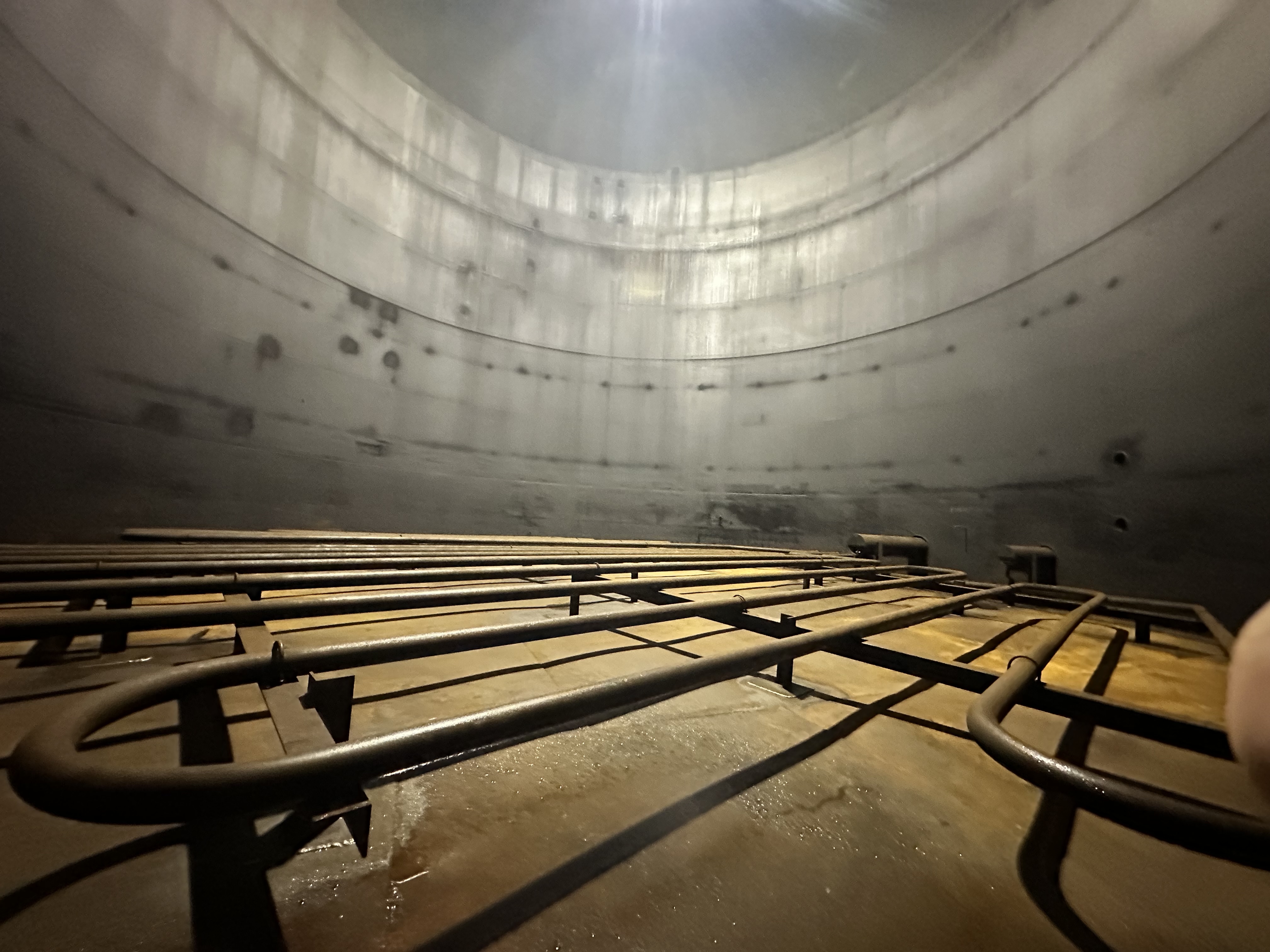
Can you tell us something about your work that not many people know about?
Cat rescue has been known.
There’s more wildlife around here than you might expect, and we even have a resident peregrine falcon who calls the power station chimney top home.
What do you like best about your role?
Each day is different, and I’d struggle to get bored in my job. Plus with my 6-week shift rotas, I’m able to spend lots of time with my family around the hours at work.
This means I work for 4-weeks on shift, and then have 2-weeks break, before starting another 6-week block on a rotation throughout the year. I find the two week ‘stand down’ a fantastic way to catch up with normal life on a regular basis.
Shift work isn’t for everyone, but when you find a work-life routine you can commit to and enjoy, it’s certainly the right choice for some.
Perhaps the truly best part of the job is being able to view the air show from the top of the power station while doing meter readings and inspections? Here's a view from the top of 'D Station.'
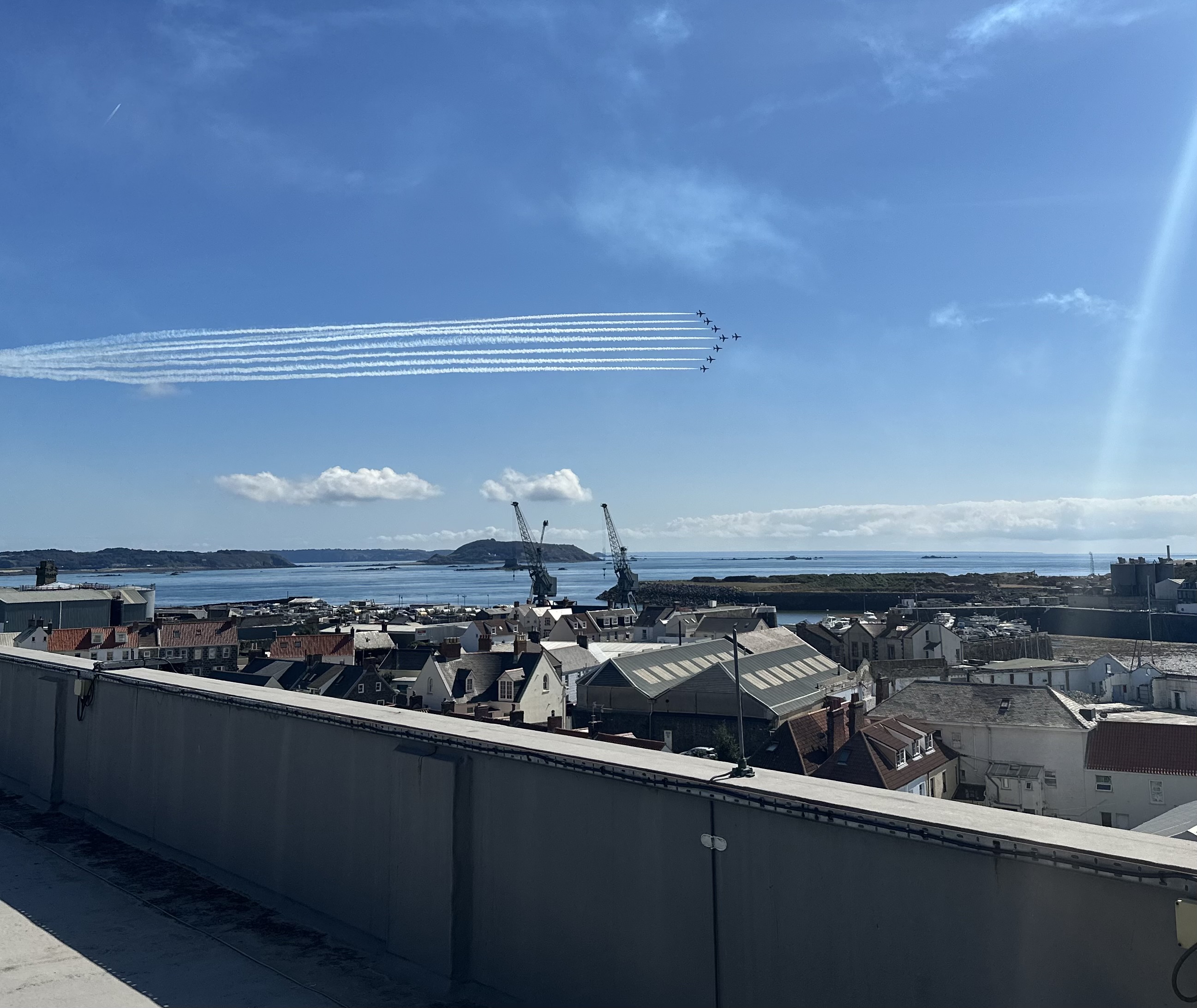
What qualifications or experience do you need to become a Shift Engineer?
HNC level qualification or equivalent experience in engineering. If you have other similar (or above) engineering qualifications, it’s worth having a chat with us too.
Maritime engineering positions are often well received despite us being land based as many of the engineering principles are relevant.
Once you’ve completed probation, other courses include steam systems safety, Authorised Person training, first aid, confined space training, managing safely and working at heights, to name a few.
After spending 18 years working in aviation, I was excited for the opportunity to move to Guernsey's power station. This may not seem like the obvious transition, but from digging deeper into skill levels plus experience in engineering, there were lots of opportunities to build on capabilities and improve.
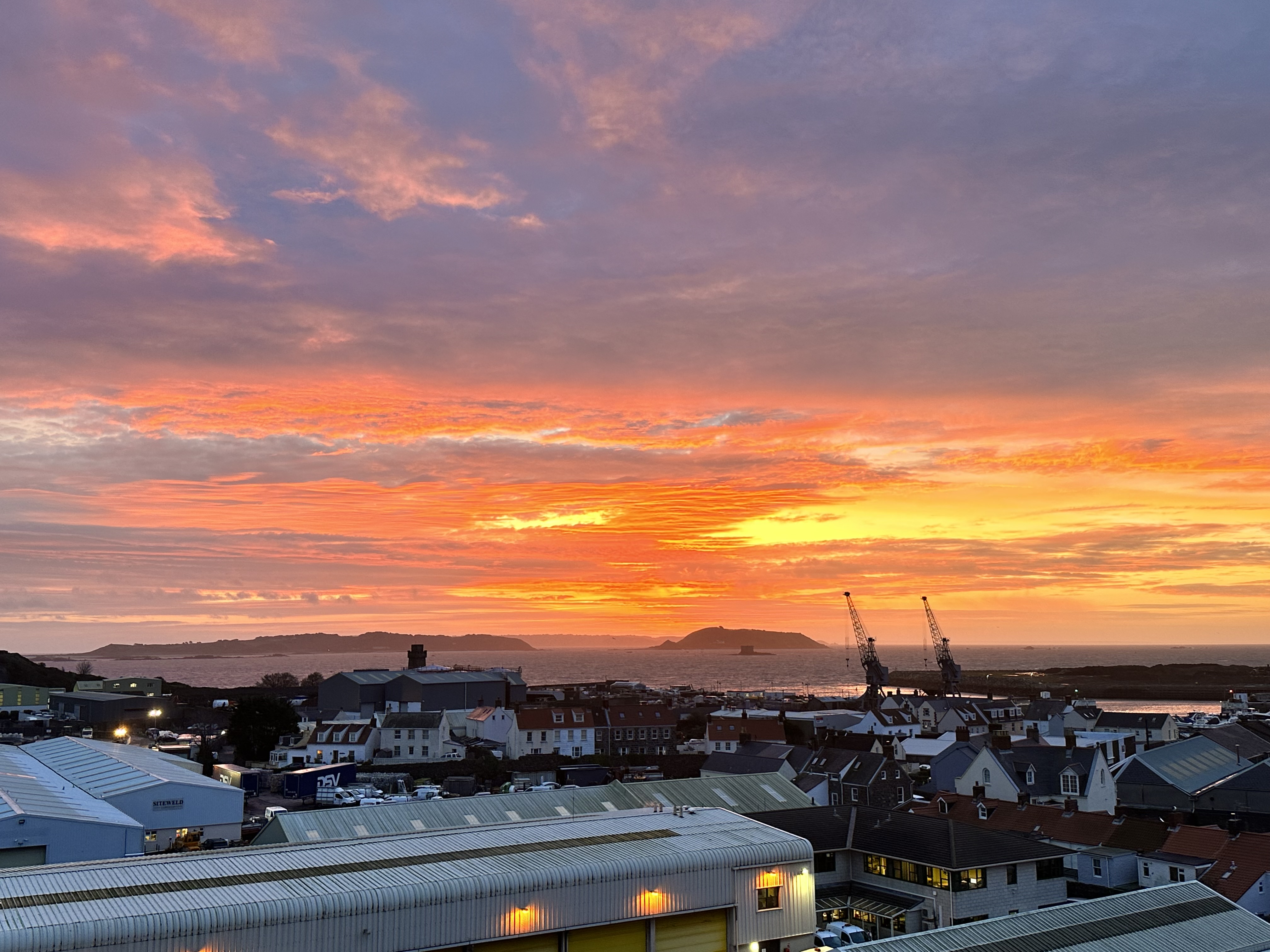
Do you work alone or as part of a team?
I work most of the time as a team of three – myself as Shift Engineer alongside my Shift Operator and Control Room Operator. There are six teams in total who help take care of our power supply 24/7, 365 days of the year.
But during 9-5 office hours, we’re an extended team of about thirty, including the office team, mechanical workshop team and workshop support.
In the power station, I support decision making with technical engineering expertise designed to help optimise the station’s performance, working alongside my Shift Operator and Control Room Operator to problem-solve and maintain power.
See our Control Room Operator interview
What advice would you give someone interested in becoming a Shift Engineer?
It’s a position that leads a lifestyle, and it’s best to figure out how the shifts can make the best of you.
Unlike many other jobs in Guernsey, you’ve got the chance for regular two-week blocks of time off where you can spend time with family and friends, work on yourself, take trips outside of school holidays, or get jobs done around the house.
For me, it’s a rewarding job that’s given me a new level of experience and understanding in engineering.
The best option would be to come down to the Power Station and see for yourself as it’s hard to get across what it’s like from the outside.

What do you think are the best benefits offered by GEL?
The benefits package includes a healthcare package, pension scheme, shop discount and Union Protection.
Union Protection is the rights, benefits and support provided by labour unions and often includes collective bargaining for fair wages, benefits, and working conditions, alongside representation in disputes to help make sure workers rights are upheld.
When is the busiest time for you?
Between the autumn and spring clock change, islanders demand a lot of electricity. This means we must run the power station as our ‘top-up’ mechanism far more as demand exceeds our 60MW importation capacity, plus day-to-day site work.
But even during warmer, lighter months, we’re still kept busy with daily maintenance and generator testing.
We use the graphic below to help show customers what our 'load profile' looks like during a typical weekday, and during winter the peaks can often be even higher.
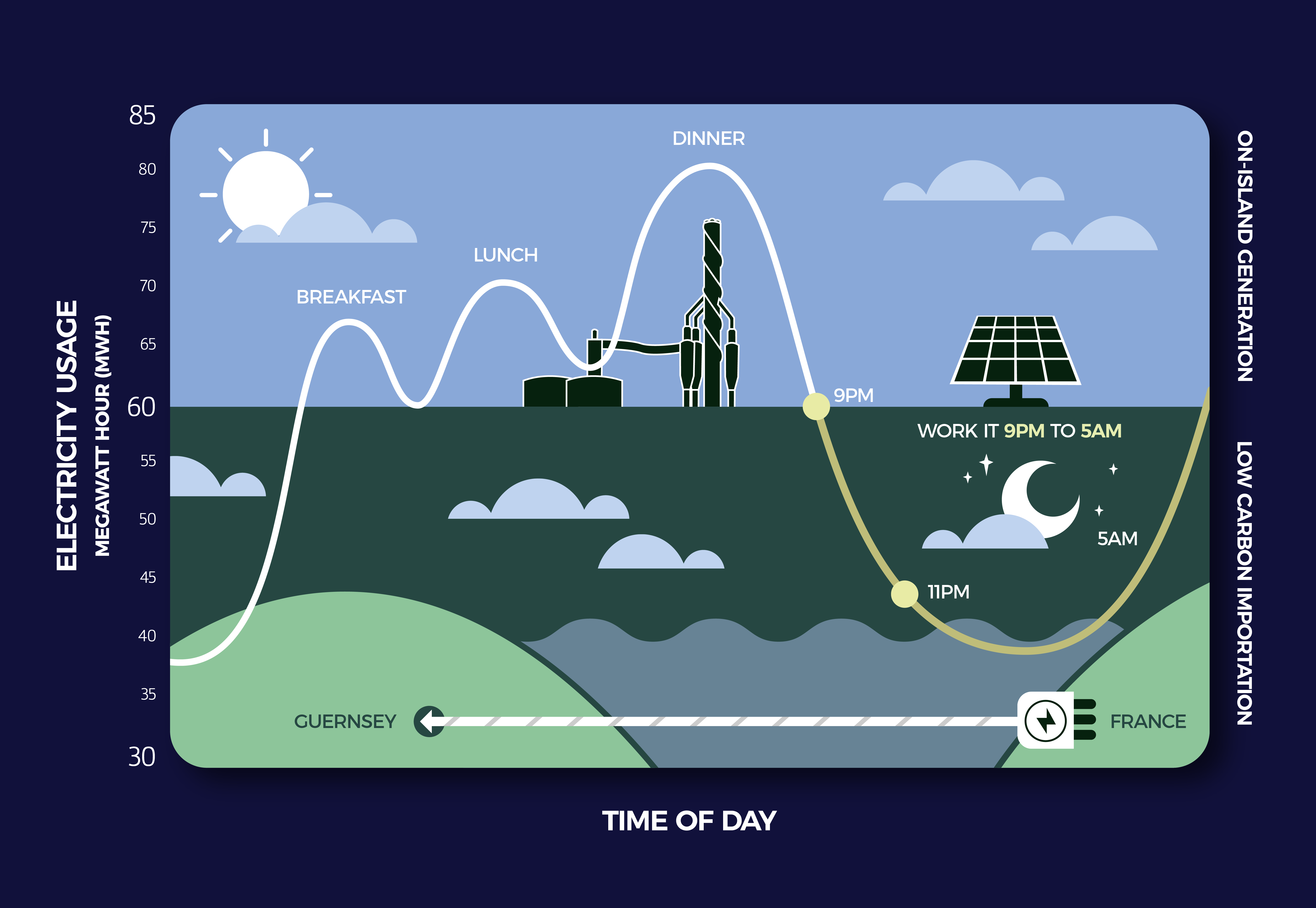
If there is an unexpected power outage, what do you need to do?
The Shift Engineers lead the operation to get power supply back on. We’ll also need support from other departments, for example we’ll work closely with our network team out on the roads to make sure we return safe electricity back to customers. We’ll also need to make sure any potential issues aren’t brought back with the supply as it could lead to another fault in the system.
The Shift Operator will then prepare the engines needed to return the power supply back to the network and re-illuminate everybody’s homes.
See our Shift Operator interview
This is different to when a specific area in the island has an outage as this is usually because of a fault in the network, for example cable damage during wet weather. This is when our Distribution team are dispatched by our Control Room Operator to go out, find the fault and repair it.
Find out more about power cuts
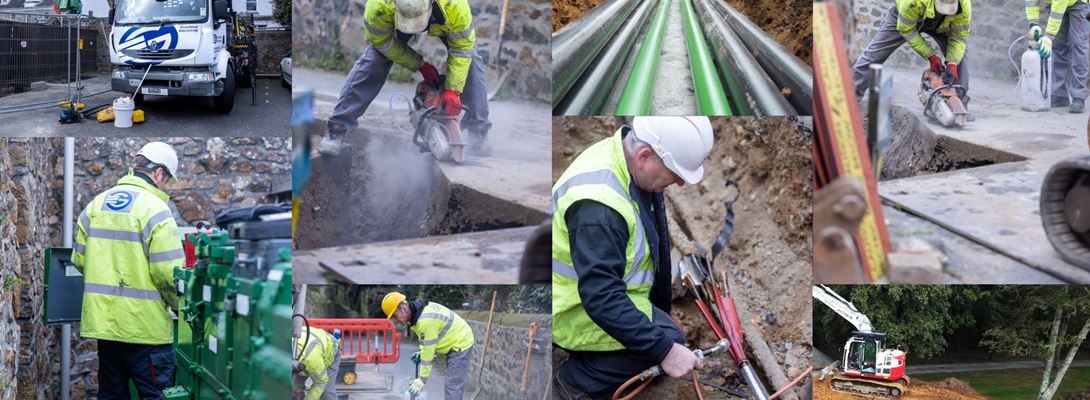
What challenges do you often come across as a Shift Engineer?
Every day could throw a curve ball.
When I started, my first challenge was getting used to the size and scale of the site we have. From tracing complicated pipework to understanding how the systems fit together and functions, and then learning to run engines that have been around longer than I have.
If you haven’t been on a power station tour yet, it’s definitely worth doing as for such a small island, it’s incredible just how large and vast the place is.
But these are challenges that can be overcome working in a team, which is something I particularly enjoy. I believe getting on with everyone on a common level is particularly important so we’re all able to achieve the same outcome and goals.
Interested in joining our team?







